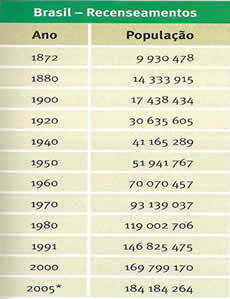The settlement of Central Brazil began with the development of river navigation in the Paraguay basin, in the century XVI, when the Spaniards sought mineral wealth, with emphasis on the sources of the Aquidauana river and the mouth of the river Miranda.
The Portuguese flags reached the current state of Mato Grosso from the 2nd half of the 16th century, and at the beginning of the 17th century, they discovered gold deposits in the region of Cuiabá, Mato Grosso, and in the south of Goiás. The incessant search for mineral wealth compromised even the development of subsistence farming, including the prohibition of the crown to carry out the mining activity, in the year of 1732. Mining could only take place under the supervision of the Portuguese crown.
In 1747, Portugal divided the region in question into the captaincies of Mato Grosso and Goiás, in order to better exploit the region's mineral wealth. The signing of the Treaty of Madrid, in 1750, resolved some of the problems of litigation between Portugal and Spain, where Portugal granted Spain the colony of Sacramento (present-day Uruguay), receiving in return the right to remain in the basin lands. Platinum. Despite the signing of the agreement, Portugal ended up exceeding its limit, with the justification of defense in the face of indigenous attacks. The cities of Vila Maria (now Cáceres) and Albuquerque (now Corumbá) were founded in 1778 due to these factors.
In the Chapada dos Guimarães region, the main agricultural activities that fed mining were centralized, complemented by the development of cattle raising. The problems of mining, created with the diversion of labor to meet the social development of these centers and the technical insufficiency in the organization and execution of the mining works, reduced the efficiency of the effort. But at the beginning of the 19th century, the change in attitude of the colonial administration, allowing the mining of diamonds, gave new directions to settlement.
Do not stop now... There's more after the advertising ;)
After the conflicts with Paraguay, other interests in the region took place. The concern with the population in the Pantanal region provided the expansion of cattle raising, increasing trade relations with the Triângulo Mineiro. In the region of the current state of Mato Grosso do Sul, the march to the West of São Paulo coffee reached its eastern portion at the beginning of the 20th century.
In the region of Goiás, settlement was more recent, due to distance, lack of economic and administrative incentives and difficulties with communication. The supply of cattle to the mining areas attracted cattle breeders from Bahia. After mining, the settlement took on a dispersive character. The movement in search of better pastures ended up promoting large deforestation in the region.
At the end of the 19th century, the occupation of the upper and middle courses of the Tocantins and Araguaia rivers began, involving the Portuguese, indigenous, blacks and mestizos. At the beginning of the 20th century, the production of mate and cattle raising stood out, both activities led by immigrants from Rio Grande do Sul. The inauguration of the Noroeste do Brasil Railroad (Bauru-Corumbá), in 1905, was fundamental for the integration of region, which began in the 20th century having as the main characteristic of its development the production farming.
Julio César Lázaro da Silva
Brazil School Collaborator
Graduated in Geography from Universidade Estadual Paulista - UNESP
Master in Human Geography from Universidade Estadual Paulista - UNESP
Would you like to reference this text in a school or academic work? Look:
SILVA, Julius César Lázaro da. "Economic History of the Midwest Region"; Brazil School. Available in: https://brasilescola.uol.com.br/brasil/historia-economica-regiao-centro-oeste.htm. Accessed on June 27, 2021.


